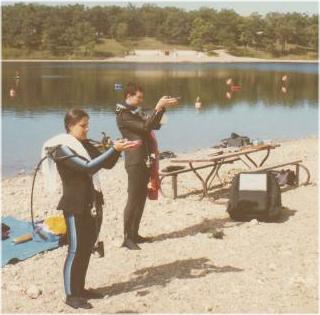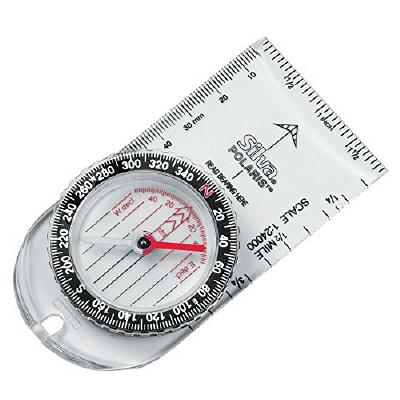 |
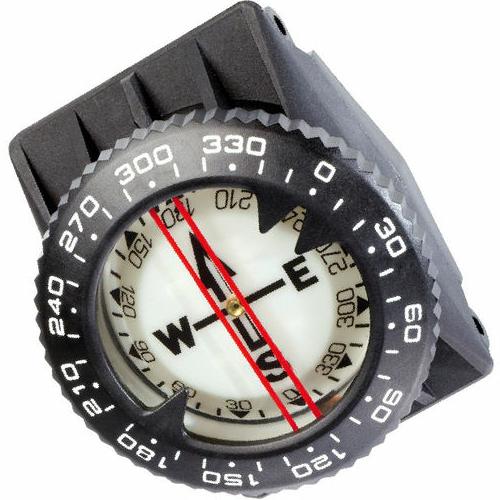 |
 |
||
| Land Orienteering Compass | Underwater Compass | UW Compass Parts |
The compass is most often mounted on a console. The console acts like a mini compass board and facilitates holding a steady course. The preferred placement of the compass on the console is closer to the diver, as opposed to the far end of the console. Compass boards are often homemade, although the board, without instruments, and expensive tactical devices can be purchased. We prefer a side reader compass since this arrangement facilitates taking a bearing (getting intended direction of travel) while still in the water.
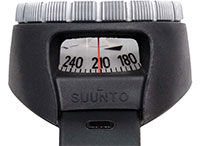 |
|
Side Reader |
Compass boards typically have a compass, timing device, depth gauge, and a level. In general, compass boards are considered more reliable than a compass mounted on a console. Our navigation compass boards use a capillary depth gauge since navigation training occurs in shallow water.
Based on watching students learn compass skills, we prefer a compass on a console (or a board) as opposed to mounted on a wrist since it is extremely difficult to be consistent with a wrist mounted device.
 |
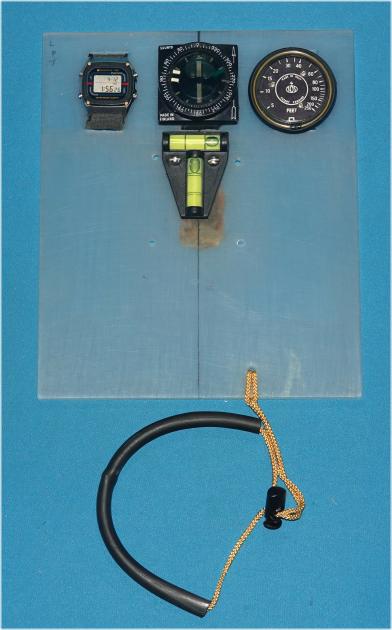 |
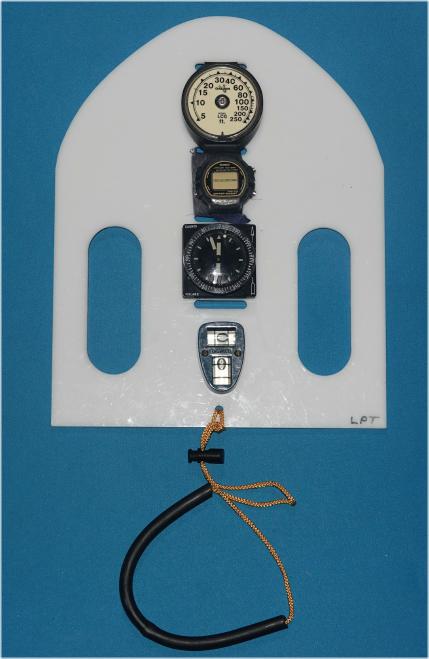 |
 |
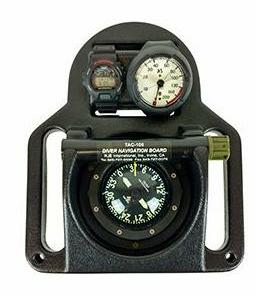 |
|||
|
Console |
"T" Arrangement |
"Linear" Arrangement |
Compass Slate | RJE Tactical Board |
It is critical that the diver and compass move as one unit (avoiding the natural tendency to simply move the console with the hands to align the off course needle.) The best way to keep the compass and body moving as a single unit is to hold the console in both hands (equally spaced on either side) and to lock the elbows tightly into the body. This forces the body and the console to move as a single unit. (Imagine a straight line thru the long axis of the body extending through the lubber line of the compass.) To facilitate practicing this procedure, we use the "towel exercise:" While on shore, students take a bearing towards a landmark and set their compass bezel. They then place a towel over their heads, lock their elbows tight along the body and walk forward keeping the compass needle aligned with the lubber line marks. This develops the oneness of compass and self.
|
|
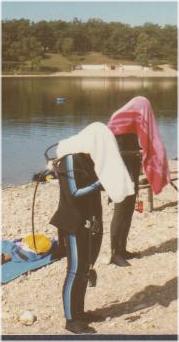 |
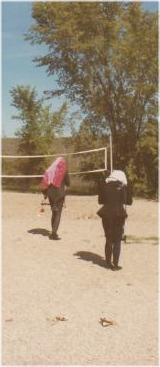 |
||
| Taking A Bearing | Covering Head |
Once successful on land, they are ready to practice underwater.
In the words of legendary football coach, Vince Lombardy, "Practice does not make perfect; only perfect practice makes perfect performance." So, an important aspect in learning underwater navigation is practice that provides successful results. To this end, I have the students set up a diamond shaped practice course. Using distance-marked line, the students place an anchored dive flag or swim noodle ( See Noodles for assembly directions) at 100 feet from shore to form 2 points of the diamond. While they are doing this, I add a center point ~ 50 feet from shore as well as the farthest tip of the diamond. A more detailed description of our two practice courses is given Here.
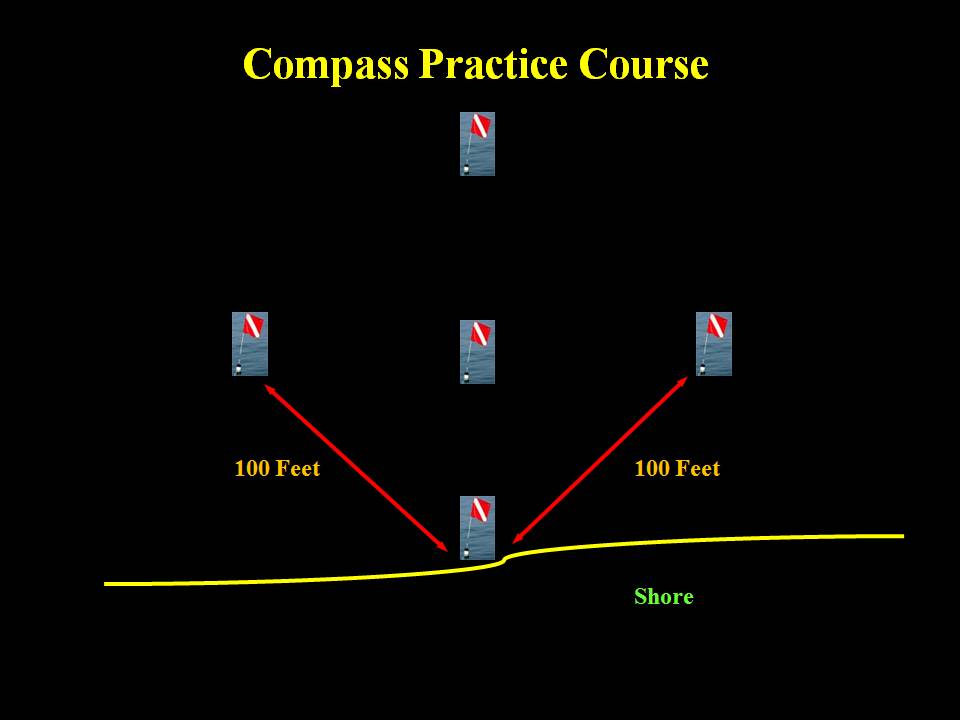
The students first swim the short distance (~ 50 feet) from shore to the center marker. They are almost always successful on their first attempt. It not, then they practice this short distance until they hit the center marker. Then, as a buddy team (one spotter and one navigator), the students sequentially target each point of the diamond, alternating roles at each leg. The spotter looks forward to hopefully detect the target. The navigator locks the console close to the body such that the console is directly below the eyes. This minimizes tendency to move the hands/console when the needle strays outside the lubber line. The navigator counts kick cycles and, if the object is not spotted after 10% beyond estimated number of kicks, the team surfaces, moves toward the missed target and then sights on the next target. Typically, after a few laps, the team runs the entire diamond course without the need to surface.
|
|
|
Success! |
Conclusion: Using the towel exercise and a defined practice course facilitates learning underwater navigation skills.
Jump To: Navigation Kick Cycles The Compass Towel Exercise Practice Course
Go To: Home About "Harris" Articles Slides War Stories Editorials Links Fini
About
The Author:
Larry "Harris" Taylor, Ph.D. is a biochemist and Diving Safety Coordinator at the University of Michigan. He has authored more than 200 scuba related articles. His personal dive library (See Alert Diver, Mar/Apr, 1997, p. 54) is considered one of the best recreational sources of information In North America.
All rights reserved
Use of these articles for personal or organizational profit is specifically denied.
These articles may be used for not-for-profit diving education
